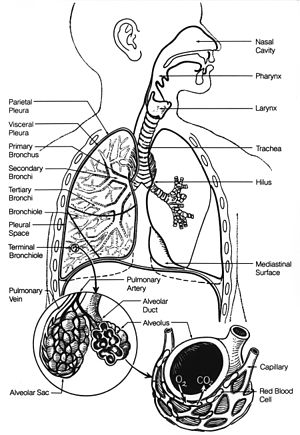How breathing take place in the human respiratory system

As we all know, the primary organ for respiration is the lungs which takes in oxygen and gives out carbon dioxide as we breath in and out.
In the throat, the trachea or windpipe filters the air and the trachea branches into two bronchi tubes that leads to the lungs. Once the lungs oxygen is moved into the bloodstream, blood carries the oxygen through the body to where it is needed.
purple blood cells gather carbon dioxide from the frame’s cells and transports it back to the lungs.
An exchange of oxygen and carbon dioxide takes place in the alveoli, a small structures within the lungs. The carbon dioxide which is a waste gas, is exhaled and the cycle begins again with the subsequent breath. The diaphragm is a dome-formed muscle underneath the lungs that controls breathing. The diaphragm flattens out and pulls forward, drawing air into the lungs for inhalation. During exhalation, the diaphragm expands to force air out of the lungs.
And also did you know that adults usually take twelve to twenty breaths in line with minute. Strenuous workout drives the breath fee up to an average of forty five breaths per minute.
Wow